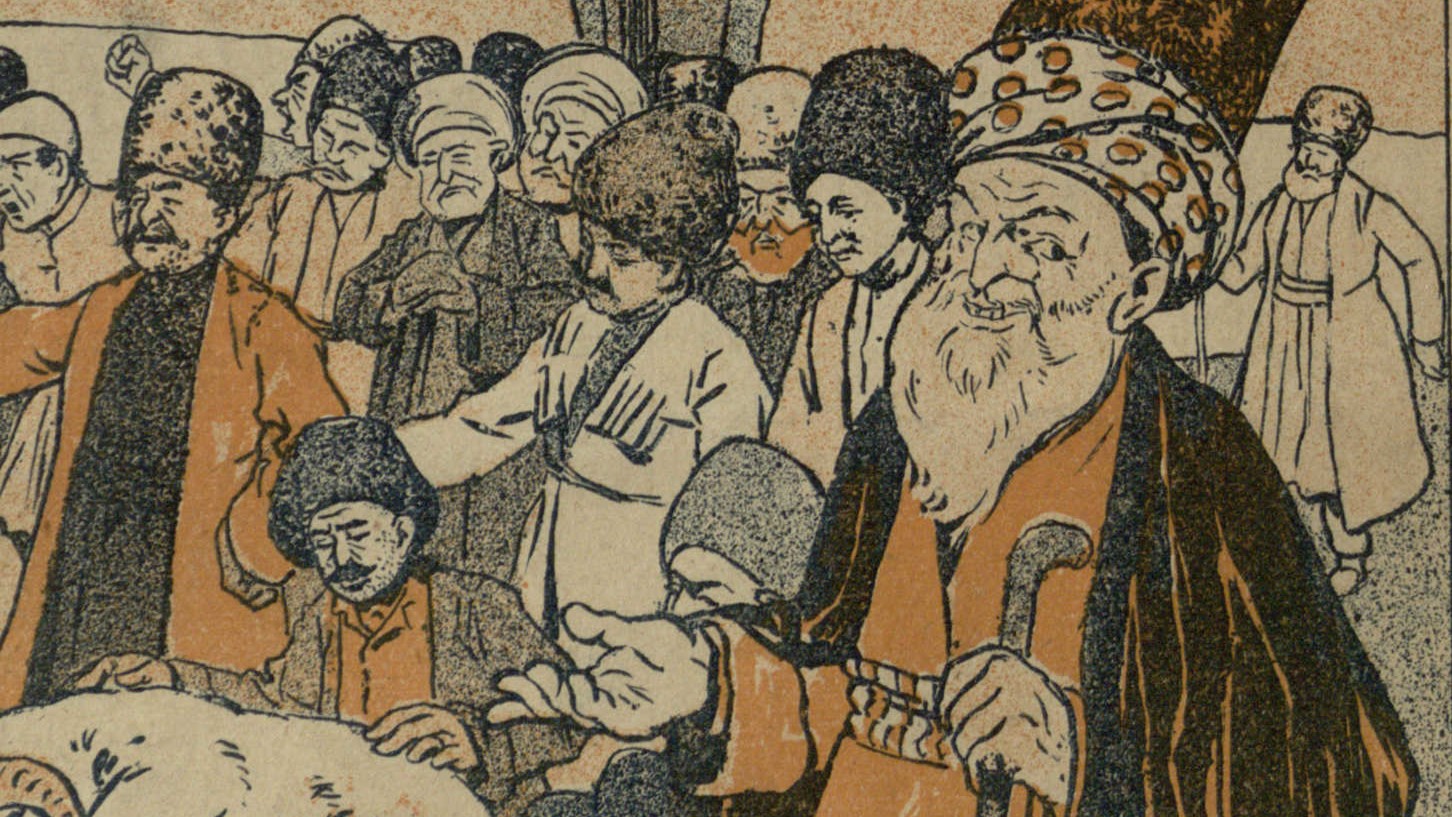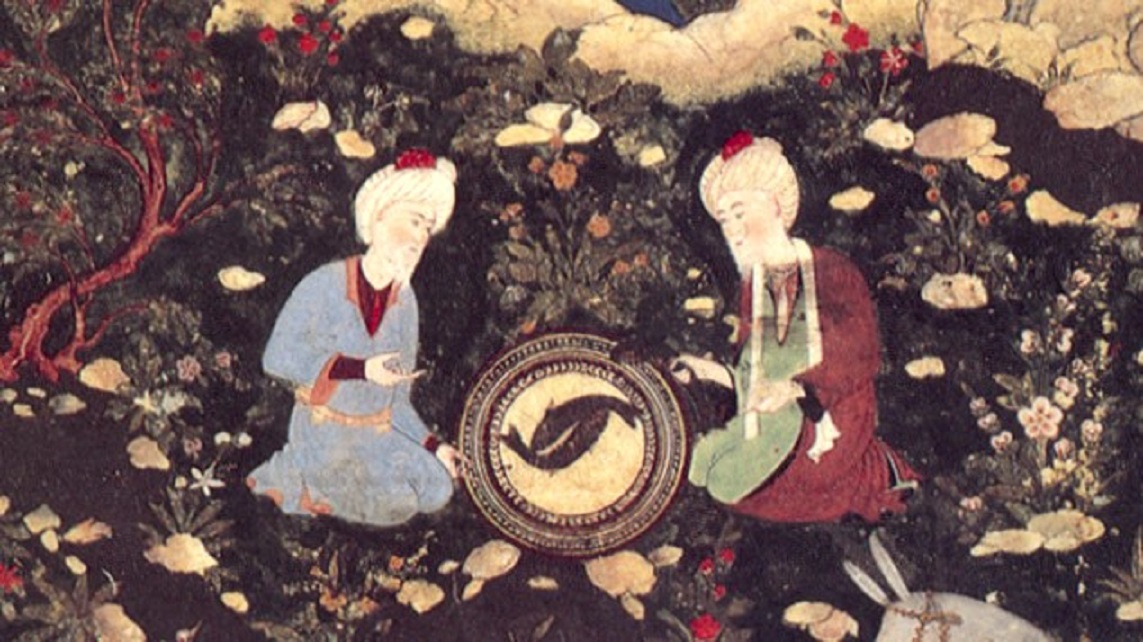Nasreddin Hodja: The archetypal trickster of Muslim folklore

While a man called Nasreddin Hodja may actually have existed, it is the fictionalised version found in the eponymous fables that presides in the popular imagination of the Muslim world.
For centuries, stories featuring the 13th century Turkish cleric have been told across the Middle East, where his name has become a byword for fool’s wisdom.
The stories have a comedic value in themselves but also represent an archetypal character present in many cultures; that of the jester challenging conventional wisdom with his wit.
'Inherent in a Nasreddin story is the joke, the moral - and the little extra which brings the consciousness of the potential mystic a little further on the way to realisation'
Idries Shah, Indian academic
Similar characters include the raven in ancient European mythology and Anansi, the bringer of mischief in West African folklore.
Given how common these figures are, the enduring popularity of Nasreddin’s adventures could reveal something about our own psychology and our want of a little chaos to break up the oppressive tedium of normality.
Stay informed with MEE's newsletters
Sign up to get the latest alerts, insights and analysis, starting with Turkey Unpacked
In the folktales, the cleric usually finds himself travelling with his donkey, stumbling into some sort of adventure that leaves him either the butt of the joke or the hero of the story.
In one episode, he draws curious glances as he rides a donkey while sitting on it back to front.
As the animal trudges on, a passerby asks the elderly traveller: “Why are you riding your donkey the wrong way around?” To which the jovial cleric replies: “I am the right way round, it’s my donkey who is facing the wrong direction.”
The anecdote is one among hundreds in which the character features, albeit with slight modifications to his name. For Turks, he is Nasreddin Hodja; for Arabs he is Joha, and in Iran and South Asia, it is Mulla Nasreddin.
Usually, the stories come with an underlying moral or didactic message, either to challenge popular conceptions of common sense or to make a point about social injustice.
In another anecdote, Nasreddin is a judge charged with resolving a dispute between a beggar and an innkeeper over soup.
The beggar is accused of holding a piece of bread over the vat of soup in order to capture some of its flavour.
Catching him in the act, the raging innkeeper demands the beggar pay him for stealing the “smell” of the dish.
The wise judge rules in the innkeeper’s favour but orders that the smell of the soup be paid for with the jingle of a coin purse.
The trickster archetype
Nasreddin has often been called a trickster figure, a reference to an archetypal aspect of human psychology described by the Swiss psychoanalyst Carl Jung and later adopted by some literary theorists.
According to this theory, tricksters exist at the border between socially acceptable and absurd behaviour, slyly traversing the two, in order to expose the pitfalls of conventional thinking.
At the conclusion of Nasreddin’s fables, it is usually those scratching their heads at the end that are left looking more foolish than Nasreddin himself.
In his book Trickster Makes This World, the scholar Lewis Hyde comments on the mischievous nature of the archetype and the purpose it serves for those who consumed the stories.
He writes that the function of the trickster is to: “Disturb the established categories of truth and property and, by so doing, open the road to possible new worlds.”
In other words, the point of characters like Nasreddin is to change the way people think.
By accepting this analysis, Nasreddin joins other archetypal trickster figures present in cultures across the world.
According to Hyde, these include the coyote of Native American folklore and characters like Loki in Norse mythology and Hermes in the Greek pantheon.
Given their similar purpose, stories involving a trickster either share the same themes or are interchangeable between cultures.
A case in point is the tale involving Nasreddin’s journey with his son and their donkey.
Walking one day beside the donkey, the pair are mocked by passersby for using their feet instead of riding the donkey.
Hearing their criticism, Nasreddin puts the boy on the donkey but those passing them now have a new complaint; that the youth rides the donkey while his father is forced to walk.
Ashamed, the boy, asks his father to take his place but that does not stop the critics, who now fault Nasreddin for riding the donkey while the boy walks.
The pair then decide to ride on the animal together but after a short while the donkey slows due to exhaustion, earning more rebuke from those watching.
Exasperated, Nasreddin then decides that he and his son will carry the donkey to their destination, thereby teaching the young man the futility of trying to please critics - a message relevant today and also relevant when Aesop was sharing his fables in Ancient Greece.
Attentive readers will have noticed the similarities between the tale involving Nasreddin and the fable of The Miller, His Son, and Their Donkey.
Islam’s other tricksters
Nasreddin is not the only trickster in Islamic culture - with Jung also citing the story of Khidr in the Quran.
A mysterious figure not definitively identified by Muslim scholars, Khidr is simply described as God’s “righteous servant” in the surah (chapter) called “Al-Kahf” (The Cave).
According to the Quranic narrative, Moses meets Khidr in the hope of attaining divine knowledge but is warned not to question anything he witnesses until Khidr himself decides to speak.
Moses agrees but finds himself unable to keep his objections to himself when Khidr scuttles a boat, slays a young man and repairs a collapsing wall in a town that had refused them hospitality.
With Moses not abiding by his requests, Khidr leaves his company but not before explaining his actions.
The boat was scuttled to prevent it from being seized by a tyrannical monarch; the boy would grow up to oppress his parents and the collapse of the wall would have revealed treasures belonging to orphans, which if exposed would be stolen by the townspeople.
Underlying the narrative is the message that actions that seem absurd on the surface may have a hidden wisdom to them and that there are some forms of knowledge that will remain out of bounds to humankind.
Outside of religious sources, early Arab and Persian Muslim cultures also had the figures of Joha and Bohlul, characters that would eventually become synonymous with Nasreddin despite being centuries older than him.
As in the Aesop fable, it is likely that stories initially associated with other figures were simply retold with Nasreddin as protagonist.
This again strengthens the notion that those who shared the Nasreddin fables were interested less by who he was as a fictional character but instead the underlying archetype he represented.
For Jung and his followers, the trickster archetype was inherent in all humans and served a specific psychological need; an unpredictable aspect of our personality that could shatter the rigid chains of the familiar.
In his work, Hyde argues that the trickster represented the impulse for transformation and was essential to rescuing people and cultures from the abyss of stasis or complacency. The trickster acts in an absurd manner, only to create a new order from the chaos that results.
In this light, Nasreddin and his variants across the Islamic world serve as reminders to the listener or reader to question and expose the status quo so that they can move on to a higher plane of wisdom.
The late Indian academic, Idries Shah, a compiler of Nasreddin’s tales, wrote: "Superficially, most of the (Nasreddin) stories may be used as jokes. They are told and retold endlessly in the teahouses and caravanserais, in the homes and on the radio waves of Asia.
“But it is inherent in the (Nasreddin) story that it may be understood at any of many depths. There is the joke, the moral - and the little extra which brings the consciousness of the potential mystic a little further on the way to realisation."
This article is available in French on Middle East Eye French edition.
Middle East Eye delivers independent and unrivalled coverage and analysis of the Middle East, North Africa and beyond. To learn more about republishing this content and the associated fees, please fill out this form. More about MEE can be found here.








